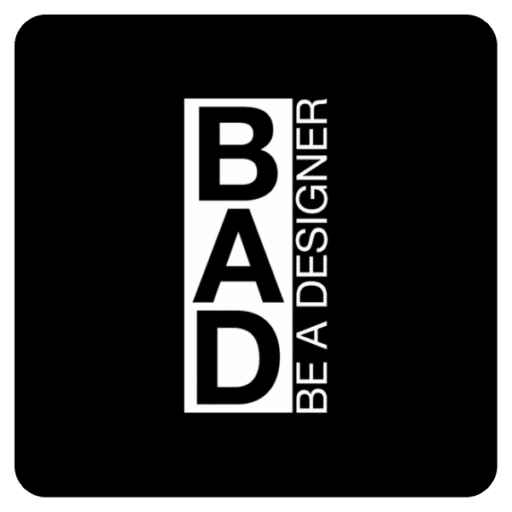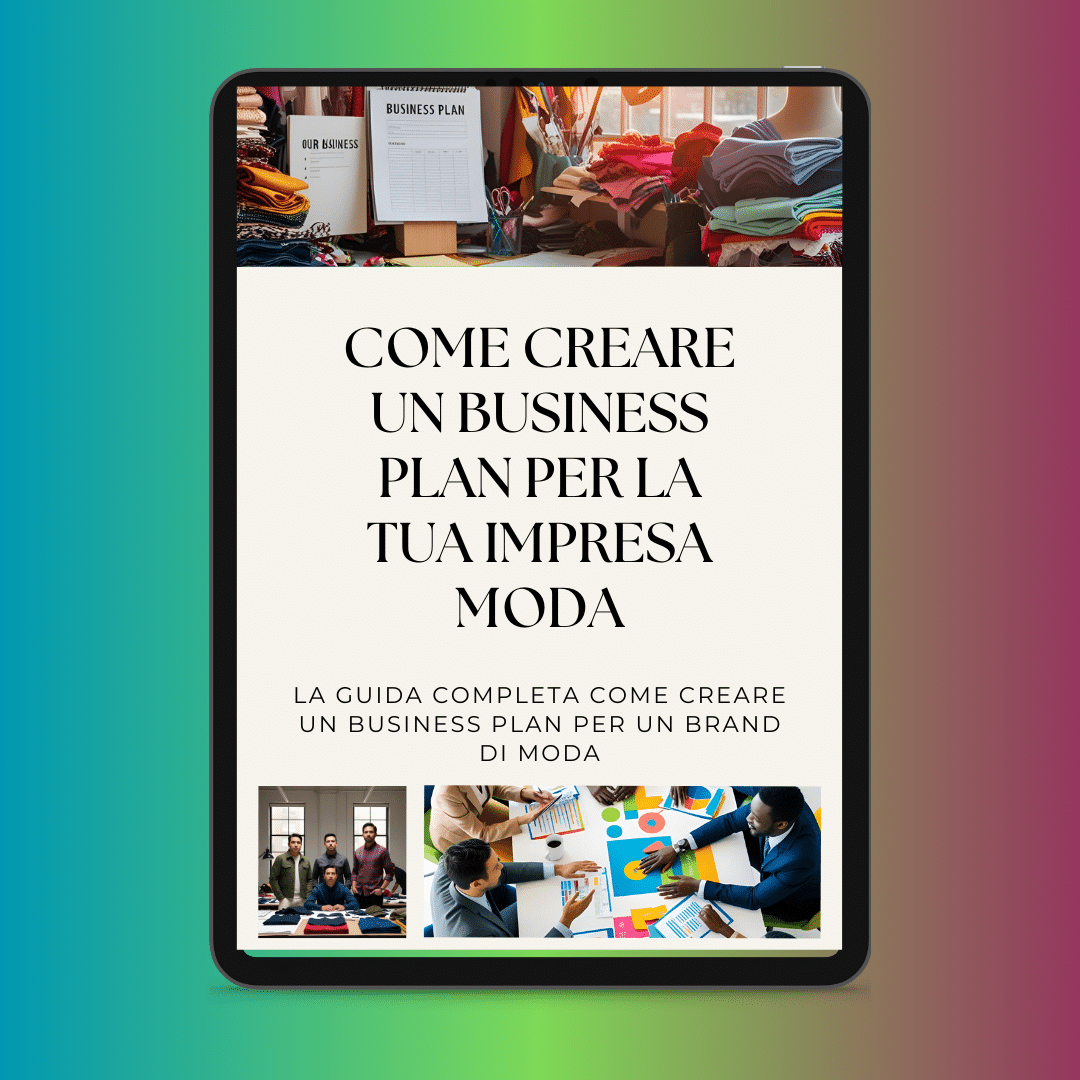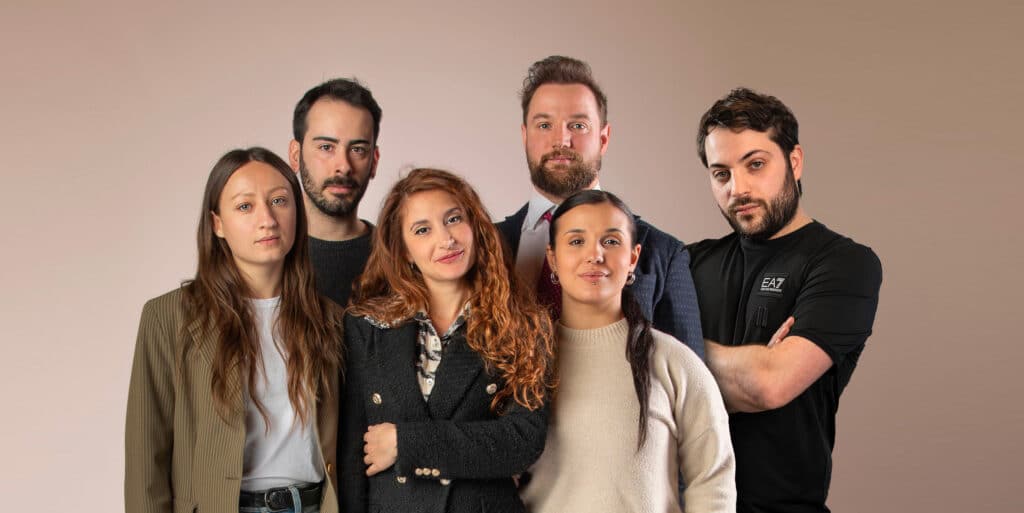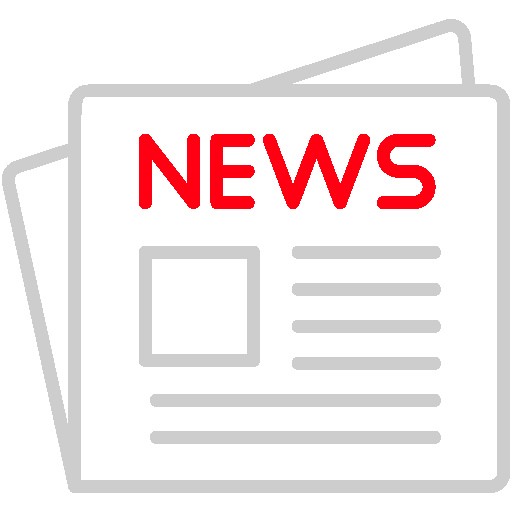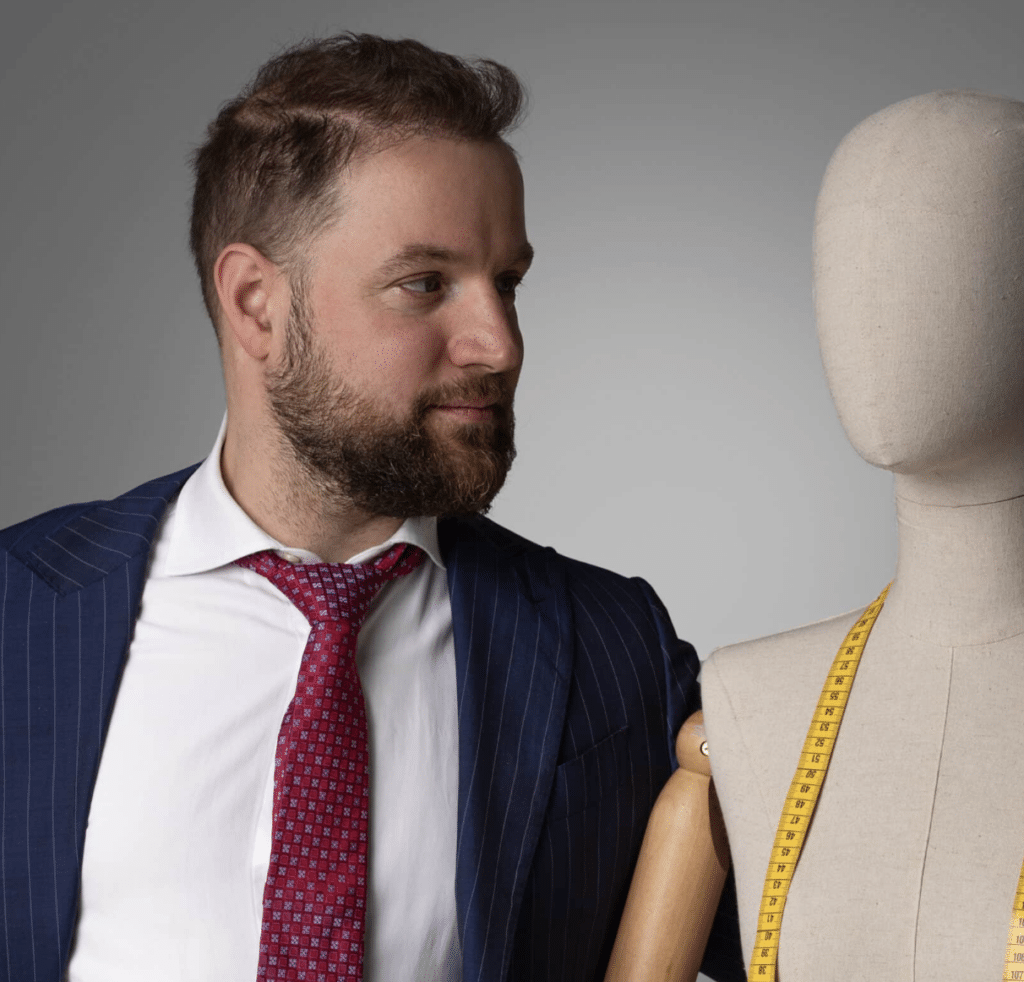Table of Contents
If you are thinking of starting your own fashion brand or growing the one you already have, you will have asked yourself at least once how to make a business plan. I know what you're thinking: endless Excel, complicated graphs and terms from a university economics textbook.
It is actually not that scary. On the contrary, a business plan or is one of the most valuable tools you can have at your disposal. It is not only a technical document, but a compass to help you shape your ideas and turn them into a concrete project.
In this article I will guide you step by step, explaining what is the business plan and what must not be missing to make it really effective. I will show you how to apply the method Fashion Business Designer to give your project a strategic soul and make it grow in the world of fashion business.
I am Corrado Manenti and for years I have been accompanying aspiring designers and entrepreneurs to turn their visions into successful brands. Together we will discover how to build a solid, realistic and tailor-made business plan for your project.
As the saying goes: a goal without a plan is just a wish. In other words, putting your strategy down on paper can make the difference between a dream in the drawer and an active brand on the market. Let's get started!
What is a Business Plan
A business plan is the document that describes every aspect of your future fashion brand: from the initial creative idea to the financial forecast. In other words, understand how to make a business plan means giving yourself a precise map showing you the final destination of your brand and all the stages to get there.
Its function, however, is not limited to internal organisation: the business plan is also the manifesto with which to present your project to potential investorspartners and stakeholders, convincing them to believe in your vision and support your new start-up in the fashion business.
A well-structured plan should include several key elements:
-
the entrepreneurial vision of your brand;
-
i products or services you intend to offer;
-
your target market;
-
strategies for marketing, distribution, sales;
-
the economic sustainability of the project
Making a fashion brand requires creativity, but also a strong entrepreneurial approach. This is where the business plan comes in: it is not a bureaucratic hurdle, but the compass that will guide you in defining your brand identity, studying the market, planning sales and managing cost and revenue projections.
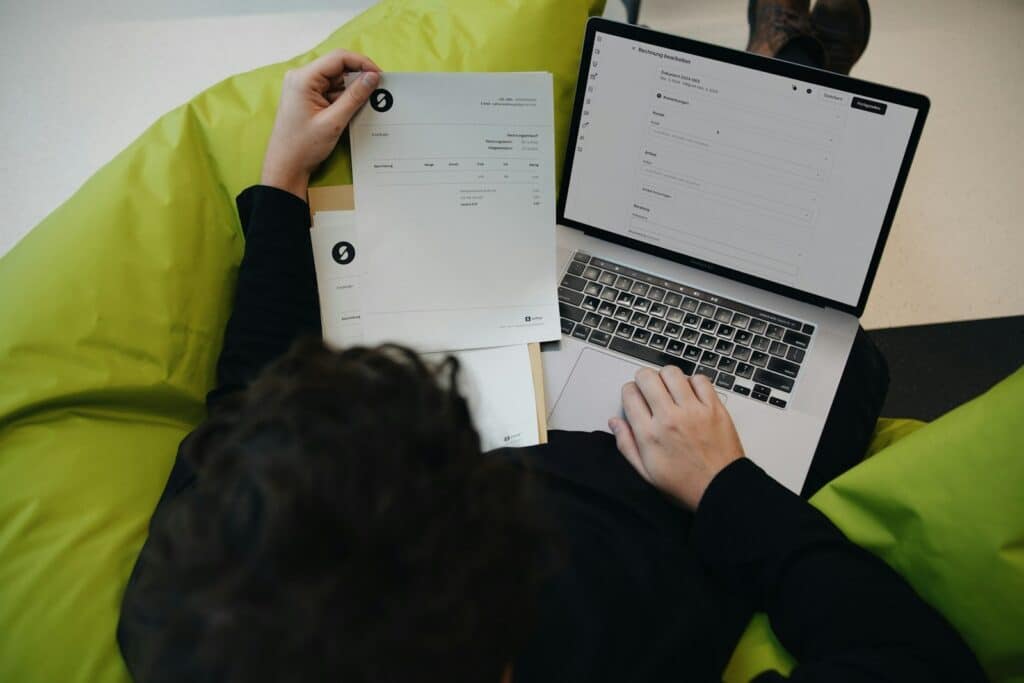
Why a business plan is also needed in fashion
Whether you are at the beginning of your journey or have already taken your first steps, you will have realised that a business plan is an indispensable tool. In fact, the very moment you ask yourself how to make a business planyou start answering crucial questions for the future of your brand: what is my mission? Who are my ideal customers? How much will I have to invest and when do I expect to cost recovery?
This process allows you to identify weaknesses and risks before even investing time and money. In the world of fashion businesswhere competition is very high and a brilliant idea alone is not enough, the business plan becomes the key to transforming dreams and intuitions into concrete strategies.
A well-made plan helps you to set short- and long-term objectivesmonitor progress and always have a point of reference. It is not a static document: it can and must evolve with your projectbut having it right from the start is a huge competitive advantage.
The heart of the plan concerns first and foremost the product. It means clearly defining what you will make, what your range will be, how it will be presented and at what price range it will be positioned. This will also determine the production choices, suppliers and the frequency of collection launches. From my point of view, this is the real core of your brand: everything revolves around the product.

The next step, to understand how to make a business plan really effective, is to think about how to market what you produce. Identifying the right sales channels for your brand is fundamental: online, physical shops, events or direct distribution. Added to this are the marketing strategiesdigital campaigns, social media, industry events or promotional materials.
In summary, when you sit down to write your business plan, you should start with three essential questions:
- what I will produce
- how I will finance the production
- what economic return can I expect?
The answers to these questions will form the basis of your business plan and the compass to grow your brand over time!
How to make a business plan in fashion: adopt an integrated strategy
I firmly believe that the reason why fashion brands need a business plan is to translating their creative vision into a brand. That is why knowing what is the business plan is not enough, we need to understand how to make it a practical tool, capable of transforming ideas into concrete actions.
A clear example is Reformationbrand that has become a benchmark for sustainable fashion. The founders had a strong creative identity and advanced skills in marketing and digital storytellingbut they soon realised that this was not enough to run a fashion e-commerce. Production, logistics, finance and technology were still fragile areas, and without an integrated vision the project risked remaining incomplete.
It was precisely the process of writing the business plan to bring these shortcomings to light. Putting every aspect of the project down on paper allowed them to identify weak pointsand ask for targeted support and reinforce missing skills, before entering the market.
That is why in the fashion business a structured plan should never be seen as a rigid document: on the contrary, it is a dynamic instrument which allows you to analyse each area - from creativity to production and distribution - and link them into asingle strategic vision. In a rapidly changing industry, a fragmented approach to planning can only take you so far: what is needed is an integrated and flexible strategy.
If you want to understand how to apply a truly integrated approach to building your brand, I recommend you discover our Be A Designer methoda structured path combining creativity and strategy to turn your idea into a solid and competitive fashion business.

How to manage time in the business plan
The time factor also plays a decisive role in drawing up a business plan. Research shows that the entrepreneurs with the best results are often those who have completed the plan within 6-12 months from the decision to start the business. This approach increases the probability of success by an average of 8%.
And that's not all: those who manage to finalise their plan in less than three months see an increase in the chances of success up to 12%. The secret lies in not getting lost in superfluous details. Focusing on the essentials and acting pragmatically allows you to speed up the process, quickly turning ideas into concrete actions without getting stuck in the planning phase.
If you think 6-12 months is too long to plan, stop for a moment and make a comparison: a doctor studies eight years to specialise, an engineer at least four to start his career.
Devoting a few months to a well-structured plan is an investment minimum in comparison, especially if it allows you to validate the market, analyse the niche and see if you can really build a competitive advantage.
That is why, when you ask yourself how to make a business plannever underestimate the value of the initial research. It is the first big step to turn your passion into a concrete and lasting project. And if you want to accelerate the path with a clear method and expert support, contact usTogether we can turn your ideas into a fashion brand ready to grow!
How to define your fashion brand identity: from creativity to strategy
Every successful fashion brand is born from a strong idea and a well-defined identity. Even before talking about numbers and strategies, it is essential to clarify who you are and what your brand stands for. In our method, this phase corresponds to the quadrant of Brand Designthe moment when we lay the foundations of the brand.
- The first thing to define is the visioni.e. the long-term aspiration, the deep 'why' that drives the brand (e.g: 'making sustainable fashion accessible to all'). This is flanked by the missionmore concrete, explaining what you do and who you do it for (for example: 'we create eco-friendly sportswear for young, environmentally conscious athletes').
- Another pillar is the brand valueschoose 3-5 principles that will guide your every choice, from the materials used to the tone of communication. Sustainability, craftsmanship, inclusiveness and innovation are just a few examples.
- Do not neglect the history and creative conceptIt tells how the idea for the brand was born and what makes it unique. Often a personal background or a particular passion becomes an integral part of the narrative. Imagine, for example, a brand born out of the desire to combine contemporary streetwear with traditional Italian craftsmanship: this concept becomes the thread running through the collections and communication.
- Finally, pay attention to name and visual identity. The name must be memorable, consistent with the values and unique on the market: check the availability of the web domain and considers registration as a trade mark. Added to this are logos, colour palettes, fonts and moodboard of inspiration. Although you can refine these elements later, having a clear idea from the beginning will help you maintain consistency throughout the project.
Define your identity means mentally positioning the brand: if you can explain in a few sentences who you are and what differentiates you, you are already halfway there. This clarity will be also indispensable in later stagesbecause every decision - from product design to marketing - must be aligned with what your brand stands for.
We have elaborated on these concepts in the article Introduction to Brand Design with the Fashion Business Designerwhich I recommend you read for further inspiration.
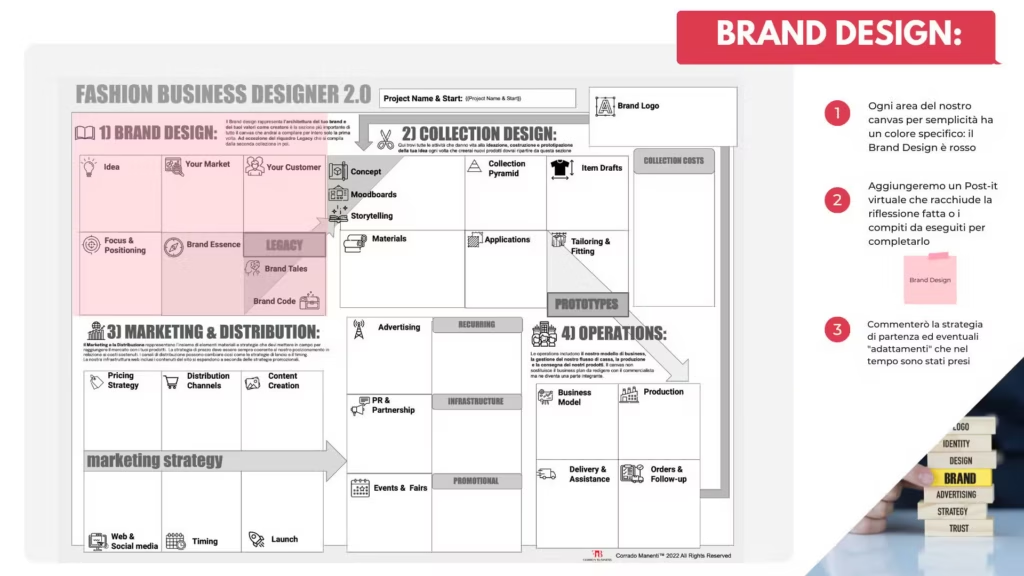
How to design the market study
After defining who you are as a brand, the next step is to understand where you position yourself and who you address. Market analysis is one of the most important sections of a business plan, because it allows you to based on hard data and not just on instinct. At this stage you no longer look only inside yourself, but you start to observe what is going on outside: who your customers are, who your competitors are and what opportunities the market offers.
To answer the fundamental question - who will buy my clothes? - you must construct a clear profile of your ideal customer. Start with demographic variables (age, gender, profession), add psychographic ones (values, interests, lifestyle) and observe purchasing behaviour (where they buy, how they discover brands, what they look for in a garment).
An example? You could target women between the ages of 25 and 40, urban sustainability-conscious professionals, willing to invest in ethical and quality clothing. To make this target even more concrete, create buyer personasfictitious characters representing your typical customers. Imagine "Giulia, 30 years old, green lawyer looking for formal but eco-friendly outfits". This exercise helps you to clearly visualise who you are addressing every time you design a collection or a marketing campaign.
The second step to truly understanding how to make a business plan consists of consulting authoritative sources and tools. Platforms such as Business of Fashion, Vogue Business o Statesman provide you with up-to-date data, while digital tools such as Google Trends, Instagram Insights and TikTok Analytics allow you to observe in real time what consumers are following, which hashtags they are using and which brands are emerging.
Finally, identify at least 3-5 brands similar to yoursthat speak to the same target group or operate in your price range. Analysing competitors will help you understand what works, what is missing in the market and where you can really differentiate yourself. You may find that many brands talk about sustainability but do not transparently communicate their supply chain: a chance to distinguish yourself with greater authenticity. Or you will notice that everyone chooses neutral palettes, while you might dare with bright colours to attract a creative audience.
Remember: one of the most common mistakes of brand launchers is to want everyone to like them. In fashion - especially in the beginning - specificity is power.
Collection and product planning
Once you have defined the strategic framework - who you are, who you sell to and what you offer that is unique - it is time to move on to the concrete planning of the products that will make up your offer. In a fashion brand, the collection is the beating heartnot only what you sell, but also the mirror the values and identity you want to communicate to your customers.
Let's do a practical example: imagine a sustainable streetwear brand which starts with a mini collection consisting of two t-shirts (one graphic and one minimal), a unisex hoodie, a pair of jogger pants and a light jacket. All garments are made of organic cotton and declined in a neutral palette - black, white and olive green - to keep fabric and dyeing costs down. In parallel, the brand works on the development of a matching trainerbut decided to postpone its launch until the following season, thus avoiding overloading the first release.
Within the business planthis planning will result in the description of the Spring/Summer collection with 5 piecesperhaps accompanied by a hint at ideas for the following Fall/Winter (such as new colours or an additional garment). In this way you will prove not only that you have a concrete planbut also a long-term development vision.
A supply chain well described in the plan is a strong signal: the reader understands that you are not improvising, but that you are a brand designer with a clear strategy. Even at this stage, knowing how to make a business plan allows you to managing the budget intelligently and to present yourself as a credible professional.
You want customised support to structure your collection and plan every detail of your fashion brand, write to us through the Be A Designer contact page: we will be happy to help you turn your idea into a concrete project!
How to sell and distribute your fashion collection
Creating is only half the job. The other half? Selling, or rather distributing well. In an industry as competitive as the fashion businesshaving an interesting collection is not enough: you need a clear strategy on where to sell it, how to propose it and who to contact. Choose the right sales channel is crucial for positioning your brand and reaching your ideal audience. It is here that the business plan takes on its commercial dimensionbecoming the tool that helps you turn a creative project into a sustainable business.
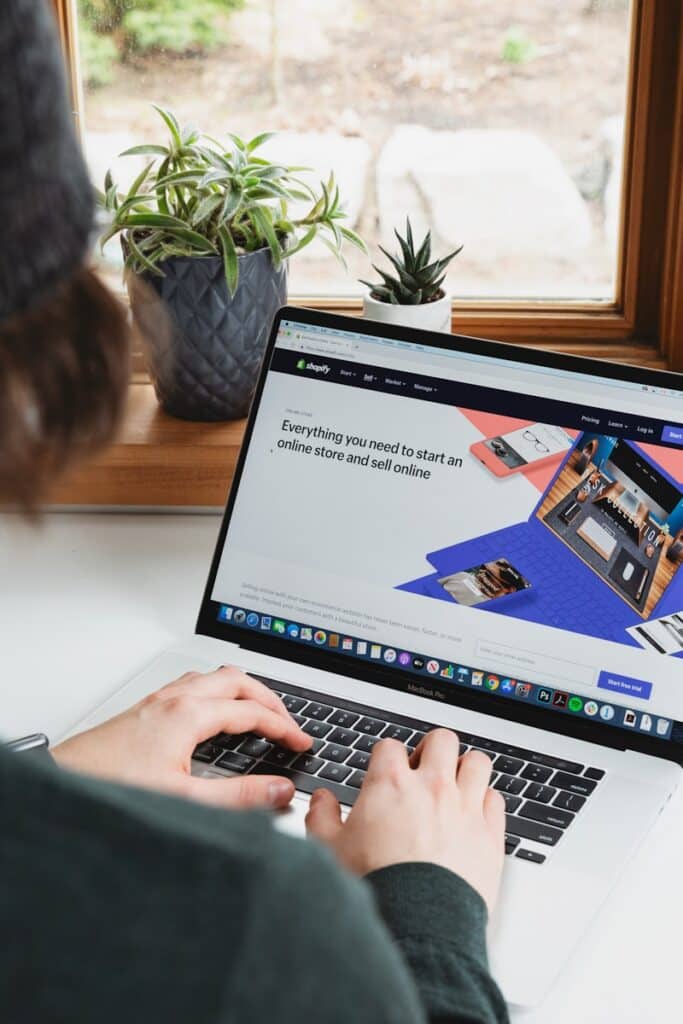
The first step concerns thee-commercepractically indispensable today. Having a proprietary site is like having your own brand headquarters: platforms such as Shopify or WooCommerce also allow you to start with contained budgets and maintain total control over pricing, communication and customer experience. In parallel, the marketplaces such as Etsy or Amazon can give you immediate visibility, albeit with lower margins. In the business plan it is important to explain which channel you will usehow you will manage it - logistics, payments, customer care - and whether you plan sales only in Italy or also abroad.
Besides online, don't forget the physical sales. Events, markets and pop-up stores allow you to making direct contact with the publicgather valuable feedback and let people experience the quality of your products first hand. Again, plan: how many events will you attend each year? What percentage of your sales will come from these activities?
Finally, there is the wholesale channel. If you aim to grow the brand in a structured way, collaborating with independent shops, concept stores or large chains may be the right way. In this case, consider the participation in showrooms and trade fairs such as Pitti Uomo, White or Who's Next, and the possible support of dedicated agents.
Whatever you choose, the rule is simple: think big, but start with a realistic plan. In your business plan tells where you envision your brand tomorrow, but also what concrete actions you will put in place in the first six months. It is this approach that makes the difference between an inspired idea and a long-lasting fashion brand.
Because even a small brand needs structure
The message is simple: don't wait until you feel 'ready' to get organised. Structured to become one. Even the smallest project, if supported by a solid base, can grow into something big.
Many creatives think that making a business plan means restricting the freedom of their ideas. In reality, it is exactly the opposite: a plan frees you from doubt and gives you a clear direction. Knowledge how to make a business plan means understanding where you are today, where you want to go and what steps you need to take to close the gap.
Even if you are a one-person brand, building a structure - even a small one - makes a difference. It helps you to making more informed decisionsto communicate clearly with customers, collaborators and suppliers, and above all to do not waste time and money on impulsive choices.

Besides, let's face it: when you have a clear plan, everything changes. You wake up with a precise objective, you know what to do, when to do it and with what budget. You can talk to the accountant without feeling out of place, or contact a workshop with a clear idea of how many parts to produce. You don't improvise: you build.
If you want to give your project a concrete structure and start with a solid foundation, get in touch with us at Be A DesignerWe will be happy to accompany you in your next steps!
How to develop a convincing value proposition
At this point in the journey your business plan must really start talking. If until now you have asked yourself how to make a business plannow the question becomes: how do I present it to the world? Because there is a simple fact to remember: if people do not understand why they should pay attention to your offer, they will not buy from you.
And this is where the value proposition of the brandclear and convincing explanation of what makes you unique and relevant. In practice, it has to answer two fundamental questions: why should the public be interested in your project? And why should they choose you over a competitor?
Picture the scene: you have decided to launch your fashion brand and you sit down in front of your accountant to tell him about it. In your head you already dread that puzzled look over your glasses, followed by the classic question: "Yes, but what will you live on in the meantime?". If you do not have a clear value propositionconvincing anyone - from a tax advisor to a potential investor - will be really difficult.
And this is even more true in the fashion businesswhere not only garments but experiences, identities and values are sold. This is where theemotional brandingToday, consumers choose a brand not only for its products, but for the emotions and principles it conveys.
A brand of sustainable fashionfor example, must build its value proposition around issues such as environmental and social respect, while a luxury brand will focus on exclusivity and the sense of status that accompanies every purchase. In both cases, the value proposition becomes the bridge connecting what you create with what your customers really want.
Value proposition: how to do the right thing for your brand
In fashion, communication is increasingly based on immaterial values such as ethics, sustainability and world view. It is no longer enough to describe the physical quality of the product: today what really counts is convey what your brand stands forwhat are its values and what message you want to leave with customers. It is this shift from tangible to intangible elements that makes the your value proposition more authentic and relevant.
To build an effective value proposition, the dialogue with potential customers, partners or even the accountant must be realistic, empathetic and concrete. A simple formula you can follow is this:
- TitleIt must immediately catch the eye by communicating the main benefit of your product or service in a direct way. It may mention what you offer or the customer you are addressing.
- Subtitlein two or three sentences explain in more detail what you propose, who your ideal customer is and why your offer is useful and relevant to him.
- List pointsPlease include at least three main advantages or features that make your proposal unique.
- ImageA photo of the product or an impactful graphic can immediately reinforce the message and make it more memorable.
Remember that a convincing value proposition answers four fundamental questions:
- What exactly do you sell?
- What concrete benefits do you offer your customers?
- Who is your ideal target group?
- How are you different and unique compared to your competitors?
Having clear answers to these questions not only helps you define your identity, but also allows you to present yourself more confidently in the fashion businessimmediately showing why your brand deserves attention.
Examples of brands with a strong value proposition
A good way to understand how to build your value proposition is to look at brands that have already clearly defined it.
Take Nasty Gal. Their message is simple but powerful: "Unique fashion, because it is not the dress that wears you, it is you that wears the dress!". In a nutshell, they communicate that the their clothes are designed for those who want to stand out from the crowdresponding to the need for exclusivity and originality. The strength of this brand lies in a very clear target - women in search of a personal style - accompanied by consistent and incisive visual communication. Also the user experience is carefully thought outIntuitive navigation, engaging product images and direct call-to-actions make the purchase path immediate.
Another example is P&Cowhich focuses on simplicity and artisanal identity. The claim "Handcrafted leather goods for those seeking authenticity and quality". speaks directly to their target audience: young adults between 25 and 35 years oldfans of authentic style and fine materials. All brand communication is consistent with this philosophyfrom the well-kept photos to the narrative accompanying the products to the clear and immediate call-to-actions.
Once the value proposition of your brandit is not enough to stop there: it is essential to test its effectiveness. Simple techniques such as the A/B tests allow you to work out which message works best. Simply create two variants of the same proposal, divide them between two audience groups and compare the results in terms of conversions. The same applies to the PPC campaignstools such as Google Ads or Facebook Ads allow you to quickly try out different versions of an ad and find out which value proposition captures the most interest and generates the most sales.
Ultimately, the example of these brands teaches us that the value proposition is not just a slogan, but the heart of a communication capable of attracting, convincing and retaining customers. If you also want to build a strong value proposition and learn how to test it strategically, contact Be A DesignerTogether we can help you turn your idea into a recognisable and competitive fashion brand!
FAQ: Frequently asked questions from those who want to create a fashion brand
How much money does it take to create a fashion brand?
It depends on the type of brand. You can start with a few hundred euro (printing t-shirts on demand) or invest several thousand for a complete collection. On average, to start with an e-commerce and a mini-production you need at least 2.000-5.000 €. Start lean, reinvest the revenues and use the business plan to calculate exactly how much you need.
Should I open a VAT number now?
Yes, if you sell continuously. The 'forfettario' regime is perfect to start with: simple and tax-privileged. The 'occasional service' is not suitable for those who want to build a real brand. Best to clarify everything with an accountant before starting out.
Do I need a business plan even if I start small?
Absolutely. It helps you avoid mistakes, estimate real costs, understand who you are selling to and how. It doesn't have to be long, but comprehensive. It is a practical guide that will accompany you step by step, even if you are not looking for investors.
How do I find reliable suppliers?
Search online, attend trade fairs (such as Milano Unica), ask other brands and test with small batches before committing. The quality of the partner can be seen from the first contacts.
How do I promote the brand with a small budget?
Aim at organic social media, micro-influencer, collaborations with other brands and customers treated as ambassadors. Creativity, consistency and authenticity count more than the budget, especially at the beginning.
Remember that every brand is unique and your business plan may have particular adaptations, but the basic logic remains: putting dreams in order to realise them.
But if the mere word 'business plan' gives you a headache, breathe: we make it for you. You tell us your vision, we turn it into a clear, comprehensive and professional plan - ready to be used with suppliers, investors or simply... with yourself.
Zero Excel sheets to figure out on my own, zero stress. But with maximum transparency on every stepso you always know what we are doing, why we are doing it and where it will take you.
👉 Book your free call now
⚡ Your brand won't wait.
And if you can delegate the more technical part to someone who loves it, why complicate your life? Don't ask yourself how to make a business plan.
You take care of the design. We'll take care of the plan.
